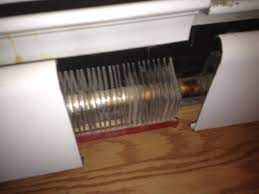
Baseboard heating systems are a common choice for heating individual rooms in many homes. However, it can be frustrating when one room fails to heat up while the rest of the house remains warm and comfortable. When baseboard heating isn’t working in one room, it’s essential to diagnose the issue promptly to restore warmth and comfort. This article explores the potential causes and solutions for baseboard heating problems in a single room.
Common Causes of Baseboard Heating Failure in One Room
Several factors can contribute to the malfunctioning of baseboard heating in a particular room:
1. Thermostat Issues
- Faulty Thermostat: A malfunctioning thermostat may fail to signal the baseboard heater to turn on.
- Incorrect Settings: Incorrect thermostat settings can prevent the heater from activating.
2. Electrical Problems
- Tripped Circuit Breaker: A tripped circuit breaker can cut off power to the baseboard heater.
- Loose Wiring Connections: Loose or damaged wiring can disrupt the flow of electricity to the heater.
3. Airflow Obstructions
- Blocked Vents or Registers: Obstructions such as furniture or curtains can block airflow to the baseboard heater, reducing its effectiveness.
- Closed Damper: Closed dampers in the ductwork can limit the flow of warm air into the room.
4. Heating Element Issues
- Burned Out Heating Element: The heating element inside the baseboard heater may be faulty or burned out.
- Built-Up Dirt and Debris: Accumulated dirt and debris can impede the performance of the heating element.
5. System Imbalance
- Air Lock: Air trapped in the heating system can prevent the proper circulation of hot water or steam to the baseboard heater.
- System Sizing: An improperly sized heating system may struggle to adequately heat certain rooms.
Solutions and Troubleshooting Tips
1. Check the Thermostat
- Ensure the thermostat is set to heat mode and the temperature setting is higher than the current room temperature.
- Replace the batteries if the thermostat is battery-powered.
- If the thermostat is faulty, consider replacing it with a new one.
2. Inspect Electrical Connections
- Check the circuit breaker panel for any tripped breakers and reset them if necessary.
- Inspect the wiring connections to the baseboard heater for any signs of damage or looseness. Tighten or replace connections as needed.
3. Ensure Adequate Airflow
- Remove any obstructions blocking the vents or registers.
- Ensure that the dampers in the ductwork are open to allow proper airflow.
4. Examine the Heating Element
- Carefully inspect the baseboard heater for any signs of damage or burnout.
- Clean the heating element to remove any accumulated dirt or debris.
- If the heating element is faulty, consider replacing it with a new one.
5. Bleed the Heating System
- If there are air bubbles trapped in the heating system, bleed the radiators or baseboard heaters to release the air.
- Follow the manufacturer’s instructions for bleeding the system carefully.
Frequently Asked Questions (FAQs)
1. Why is only one room not heating up when the rest of the house is warm?
- This could be due to various issues such as thermostat problems, electrical issues, airflow obstructions, or heating element malfunctions specific to that room.
2. How can I tell if my thermostat is working correctly?
- You can test your thermostat by setting it to a higher temperature than the current room temperature and listening for the click of the heating system turning on.
3. What should I do if the circuit breaker keeps tripping?
- If the circuit breaker keeps tripping, it could indicate an electrical problem. Consult a professional electrician to inspect and repair the wiring.
4. Can blocked vents or registers affect baseboard heating?
- Yes, blocked vents or registers can restrict airflow, reducing the effectiveness of the baseboard heater in heating the room.
5. How often should I clean the heating element?
- It’s a good practice to clean the heating element of your baseboard heater annually to prevent the buildup of dirt and debris.
6. Is it safe to bleed the heating system myself?
- Bleeding the heating system can typically be done by homeowners. However, if you’re unsure or uncomfortable doing it yourself, it’s best to hire a professional.
7. Why does air get trapped in the heating system?
- Air can get trapped in the heating system due to incomplete bleeding during installation, leaks, or changes in water pressure.
8. Can I replace a heating element myself?
- While it’s possible to replace a heating element yourself, it’s essential to follow safety precautions and manufacturer guidelines to avoid accidents and ensure proper installation.
9. How do I know if my baseboard heater is appropriately sized for the room?
- Baseboard heaters should be sized according to the room’s dimensions and insulation levels. Consult a heating professional to determine the correct size for your room.
10. Why is my baseboard heater making strange noises?
- Strange noises from the baseboard heater could indicate problems such as loose components, air trapped in the system, or debris caught in the fins. Inspect the heater and address any issues promptly.
Conclusion
When baseboard heating fails to work in one room, it can disrupt comfort and convenience. By understanding the potential causes and implementing the appropriate solutions outlined in this article, homeowners can effectively troubleshoot and resolve issues with their baseboard heating systems, restoring warmth and comfort to every room in the house. If problems persist or if you’re unsure about performing any repairs yourself, it’s always advisable to seek professional assistance to ensure the safety and efficiency of your heating system.
